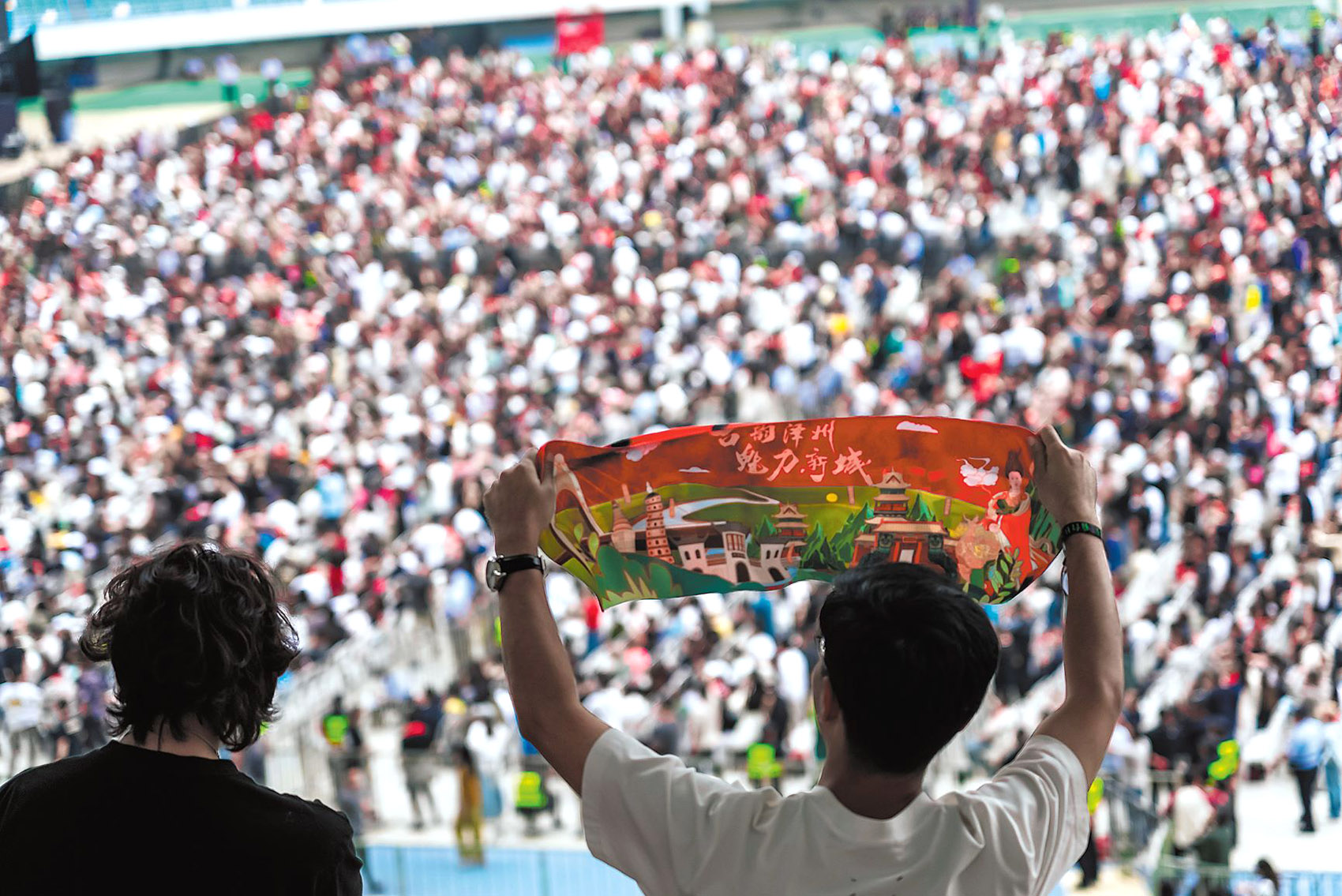Package trips incorporating events, transportation, hotels and holidays are becoming especially popular among youngsters

Thousands of people flocked to Foshan, South China's Guangdong province, during this year's Dragon Boat Festival to witness dragon boat races, a local tradition that has been kept intact for hundreds of years.
Air ticket bookings via online travel agency Trip.com surged 138 percent year-on-year to Foshan, one of the most popular tourist destinations, while those for hotels increased by 51 percent during the three-day holiday.
Wan Jiali, a 40-year-old nurse from Beijing, booked a hotel room three weeks in advance after receiving frequent recommendations from her colleagues in Guangdong and knowing fully well that Foshan's dragon boat competitions had received more than 3 billion online views last year.
READ MORE: Holiday spurs tourism, retail spending
"The hotel was within walking distance to the racing spot. When I got there at around 10 am on June 1, planning for a leisurely walk or a quick lunch, I was shocked to see the huge crowds despite the fact that the race would not start till 2 pm. I needed to seek help from local villagers to find a place from where I could possibly take a peek at the race. But it was really worthwhile. Watching on TV and experiencing the heats right there was totally different. It was really hard to imagine that a boat holding 30 people could dash off at lightning speeds," she said.
Foshan, however, has more to offer than dragon boat races.
Wan spent three days in the city, paying visits to the Foshan Ancestral Temple, a complex of historical and cultural heritage, and, of course, enjoying the local cuisine.
Another event that attracted much attention during the holiday was the 2025 Jiangsu Football City League, for which all tickets to the third-round matches were sold out days in advance.
The last match, between Nanjing and Wuxi, held on June 1, the second day of the three-day holiday, attracted 15,000 spectators to the stadium despite pouring rain.
The fervent online discussions of the football league have translated into increasing numbers of tourists traveling to cities where matches are held.
Yancheng launched a special tourist package combining bird watching with match viewership.
Football fans were allowed to visit the China Dinosaur Park for free when the match was held between the two city leagues, attracting more than 10,000 such visitors in a single day.
The combination of events and travel is a major trend taking shape in the Chinese tourism industry, said Jane Sun, CEO of Trip.com, during its Envision 2025 Global Partner Conference held in Shanghai in May.
"Young people very much like to go to events such as Taylor Swift shows, G-Dragon shows, the Olympic Games and sports activities," she said, adding that it is one major reason why the company has teamed up with global players to roll out tourism packages centered on events.
The trend started to form in 2019.

According to Trip.com, over 70 percent of people buying tickets for concerts do not live in the cities where the show is staged. Transportation and accommodation are bigger challenges for aficionados if the concert is held elsewhere. Therefore, packages combining events, transportation, hotels and holidays have been rolled out, which are especially popular among the younger generation.
When South Korean celebrity Lee Ji-eun, popularly known as IU, held a concert in Hong Kong in May last year, Trip.com rolled out a package by combining the concert, which is modern art, with a traditional folk art performances in Cheung Chau, an outlying island of Hong Kong.
Up to 23 percent of the overseas concertgoers extended their stay in Hong Kong to experience the traditional art.
"Travel is about building emotional connections. The focus on events and performances has reflected the undergoing transition in the Chinese tourism industry, showing the greater importance that tourists attach to sightseeing and experiences," said Sun Bo, chief marketing officer at Trip.com.
Indeed, the stress on events is one of the so-called "3E" trends in the tourism industry. The rising contribution of the "elderly" group should not be overlooked, said Jane Sun of Trip.com.
She said Chinese residents retire relatively earlier compared to their average life expectancy. Because they have comparatively higher budgets and are less time sensitive, this age group has shown a strong curiosity to explore the world.
More importantly, they bring income to tourist destinations and hotels during the slow season, she said.
Qiao Chengwei, product manager for domestic itineraries at online travel agency Tuniu.com, said the 50 and above age group accounted for nearly 40 percent of trips made from Oct 8 to Oct 31 last year, which was after the National Day holiday period.
According to a report released jointly by China Insights Consultancy and adult-targeted online learning service provider QuantaSing Group Ltd in October, about 17.6 percent of senior groups in China made at least three trips every year, while another 40.8 percent would travel once or twice a year.
By the end of this year, there will be over 100 million healthy elderly Chinese who make frequent trips and consume more during their travel, experts from China Tourism Academy have estimated. That would be nearly one-third of the total aging population of the country.
"The elderly in China, born in the 1960s or 1970s, are significantly different from their previous generations in terms of income, academic background and consumption habits. Not only do they have a strong willingness to travel around, but they also have the ability to do that. The optimization of transportation networks and other infrastructure have largely facilitated their outbound reach," said Gu Huimin, a professor from the School of Tourism Sciences at Beijing International Studies University.
The third trend starting with "E", as Trip.com has discovered, is Chinese tourists' deeper reach into "emerging" markets such as Norway, as well as South Africa, Tunisia and Morocco in Africa.
ALSO READ: LEGOLAND Shanghai Resort to begin trial operations ahead of July opening
In 2024, about 106,483 Chinese tourists visited Morocco, up about 78 percent from a year earlier. After the launch of direct flights from Beijing and Shanghai to Morocco, an additional 100,000 Chinese visitors will be brought to the country via the new routes in 2025, raising annual arrivals to 250,000, the Moroccan National Tourist Office (ONMT) has estimated.
To further capitalize on the outbound Chinese tourism industry, ONMT launched in February its first-ever road show in Beijing. During the annual travel trade fair ITB China held in Shanghai last month, ONMT's booth was the second largest in size.
All these reflect Morocco's continued confidence and focus on tapping into the potential of the Chinese market, said Hicham Bellaziz, ONMT's chief representative in China.
As the country will jointly host the FIFA World Cup 2030 with Spain and Portugal, it will be another good chance, or a key event as defined by Trip.com, to solicit more Chinese tourists, said Bellaziz.
Contact the writer at shijing@chinadaily.com.cn


